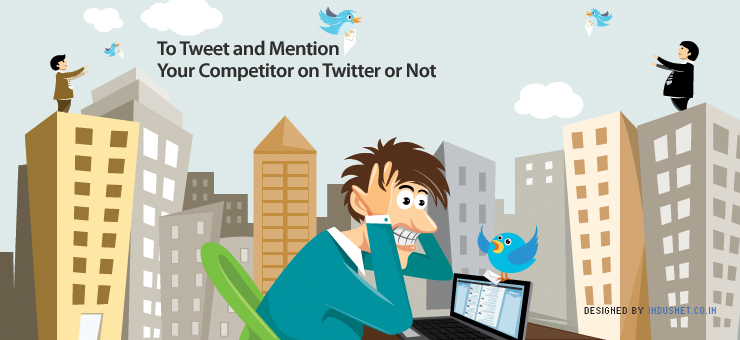
Marketing on Twitter has turned into an important part of digital marketing. In fact, universities have begun to include Twitter marketing as a compulsory module in marketing courses. With that in mind, companies and individuals often ask us what they should be tweeting anyway. The answer that we always have believed in is that there is no straight answer. As we often like to say, “It all really depends”. The question that this article will address is that whether one must tweet one’s own content or tweet a healthy mix of one’s own content, competitors content and some useful information that would help your target audience. Predictably, both social media managers and consumers experience cognitive dissonance when it comes to marketing on Twitter.
Cognitive Dissonance and Twitter Marketing
Cognitive dissonance is a state of mind where a person experiences opposing cognitions. Cognitions constitute emotions, thoughts, memories, perception etc. When a psychologist says someone is going through cognitive dissonance, they mean that a person experiences a sort of love-hate relationship to something, if one were to put it in a layman’s term. If we take the example of Twitter marketing from a company’s perspective, cognitive dissonance occurs when marketing managers are tempted to tweet competitors content along with their own, but also dislike doing so because they fear harming their own business.
A consumer on the other hand might experience cognitive dissonance when a company tweets great marketing content and within no time, the same company tweets information from a competitor. Naturally, a consumer would be confused and wonder if he should patronize the company in question or its competitor. The answer to this fundamental tweeting dilemma is rather simple. The solution begins with understanding how Twitter works, and what your marketing strategy is all about.
Postmodernist Take on Twitter Marketing
Postmodernists often say that we must avoid falling victims to existing binaries within us, which can roughly be translated as solving a cognitive dissonance by taking one of the sides exclusively. We must remember that no single strategy is the correct one, and there are uses and disadvantages in opposing strategies. Thus, we believe that tweeting one’s own content may work sometimes and at other times, it may be necessary to tweet stuff that is not yours, and sometimes can even belong to your competitor.
Tweeting Your Content Only
Tweeting your own content exclusively helps you to create a brand identity that is solely yours, with no room left for your competitors to take advantage of your position. Your consumers will not be confused and will know that they have only a few choice and if they like what you offer, they can certainly go ahead and buy it. This strategy may work when you offer a service or product that is very unique without any competition at all. It may also work if you are an established brand whose name is known widely.
Tweeting and Mentioning Your Competitors Content
However, this strategy may not work if you are a small or medium business, or if you have a lot of competition. One must understand that twitter users are identified by ‘Twitter handles’, which begin with @ and are followed by that user’s id. When a company tweets a competitor’s content, the company will have to include the competitor’s Twitter handle as well.
By doing so, your tweet will appear in the Twitter search results of your competitors’ consumers. You may lose a few of your own consumers but you stand to gain or communicate with a number of consumers who are not following you on Twitter, but are following your competitors. This strategy can be a double edged sword and is considered to be a very controversial way to market on Twitter. This strategy works if you are a small company and need more attention from consumers who use your rivals’ products. Of course, any tweet that concerns your competitors must have their Twitter handles ‘mentioned’ in the body of your tweet.
Twitter Cognitive Dissonance Takeaway
To conclude, we believe it is always a better digital marketing strategy to keep an open mind and to give more than you take. After all, Twitter is a social network and the more you give and help others and even promote others who may compete with you, you actually will gain at the end of the day, because you will receive attention and a lot of good will from your consumers and your rivals’ consumers too. It is a good practice to tweet a major percentage of the time your tweets, an occasional tweet from your competitors and then engage with not only your consumers but also with your rivals’ consumers and followers. As long as you engage and make your own company’s name be seen and heard, your marketing strategy cannot go wrong. In fact, cognitive dissonance when it comes to twitter marketing can be beneficial.